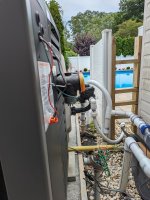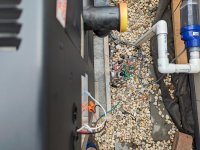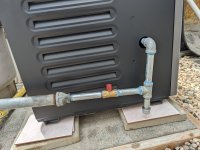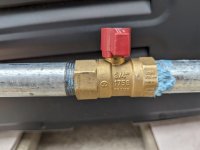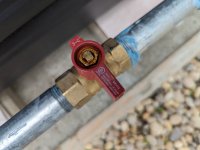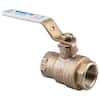- May 4, 2018
- 65
- Pool Size
- 28000
- Surface
- Vinyl
- Chlorine
- Salt Water Generator
- SWG Type
- CircuPool RJ-60 Plus
Im replacing my gas heater and need to move the electrical feed in order to line up with the new heaters connection point. There is enough slack in the wire but I will need to modify the 3/4" NM conduit a bit (about 18" higher and 6" over, see pics for reference ) It's an easy enough job for me but I'm not sure how to "glue" the conduit extension pieces while there is wire inside without getting solvent on the wires and compromising them. Im trying to avoid having to pull new wires if I can avoid it. Is there a "trick" to doing this?
Thanks for the help
Ron
Thanks for the help
Ron
Attachments
Last edited:


